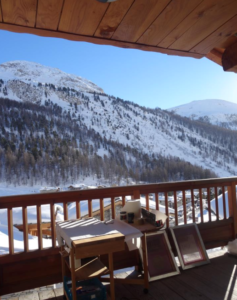Safeprint is a thin piece of polystyrene block that is a quick and easy way of making a relief print. You don’t need lino tools to carve it, just a pencil! For
this reason, it’s brilliant to use with children and in schools. If you haven’t tried it before, give it a go – it’s so quick!

Start by tracing your image or drawing. We used this photograph of a bear. You’ll need to use a very soft pencil or graphite stick: a 4B, 6B or 9B will
be perfect.

Flip over your drawing and place it face down on your piece of Safeprint. Use a pencil on its side to rub the tracing paper, transferring the image to
the Safeprint block. Make sure to use only the side of the pencil and press softly so not to make any dents in the Safeprint – these could show in
your prints.

You should have a faint drawing on your Safeprint. You can use this as a guideline for your block.

You’ll need two pencils for carving your block, the first of which is a hard, sharp pencil – sharpen an HB (or H, 2H etc) to within an inch of its life.
You want it to be sharp and scratchy for breaking the surface of the Safeprint without tearing or dragging.

The second pencil you will need is a blunt one – the kind that’s too blunt to draw with and would get you into trouble at school. You want a nicely rounded
end to press into the block and squash it.

This part works just like lino printing: you’re taking away the areas that you want to be left unprinted. This bear is going to be printed in a dark colour
onto a light background. This means that I am taking away the parts that I want to remain the background colour after it’s printed.
Use your blunt pencil to push down any large areas that you don’t want to print, just like carving away a piece of lino. The blunt, rounded end will squash
the polystyrene down so that it wont pick up any ink.

Use your sharp pencil to scratch in any lines and details. The sharp point will break through the surface of the polystyrene without tearing it. For thicker
lines, break through the surface first with a sharp pencil and then go over them with the blunt pencil to widen the lines.

Continue to draw all over your block with the sharp and blunt pencils, pushing or scratching away areas that you don’t want to print.

If your design is a shape like this one, use a scalpel to cut out your block. This is the only part that isn’t suitable for children, especially as the
knife needs to be really sharp so that it slices through the block rather than tearing it.


When you have cut out your block you are ready to ink it up. Mix up a colour of your choice on an inking tray or slab. For printing onto paper, we are
using Brian Clegg Premium Block Printing Inks.
These are perfect for using with Safeprint, come in a great variety of colours, are water-based and brilliant for using with children.
Roll out an area of your ink onto your tray or slab. You don’t want the ink to be squelchy. You want an even, suede-like texture that makes a zzz sound
with your roller.

Ink up your roller in this patch of ink and gently roll it onto your block. Make sure you cover all the areas of the block but try not to go over it too
many times as the roller could end up lifting off the ink instead of putting it on.

Place your block face down on the paper. Use a clean roller to roll all over the back of the block. You may need to hold it still with your free hand.

Peel off your block to reveal your print!

To print onto fabric, remove the excess paper ink off your block by pressing it onto some scrap paper a few times. For printing onto fabric we are using
Speedball Block Printing Inks for Fabric which are water-based and easy to use.
Roll out the ink and print using exactly the same method onto your fabric!


For this project you will need:
- Safeprint
Polystyrene - Tracing paper
- Soft pencil or graphite stick
- Sharp, hard pencil
- Blunt pencil
- Scalpel and cutting board
- Inking tray or glass slab
- Two rollers
- Brian Clegg Block Printing Inks for printing onto paper
- Speedball Block Printing Inks for Fabric
- Paper to print on
- Fabric to print on such as a Tote Bag or Apron


























